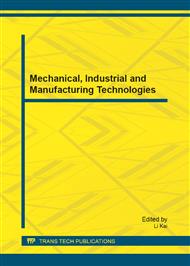p.260
p.267
p.272
p.281
p.286
p.293
p.298
p.304
p.311
Traction Control for a Fuel Cell Hybrid Vehicle (FCHV)
Abstract:
Traction control for the proton exchange membrane (PEM) fuel cell hybrid vehicle is studied. The traction control denotes the anti-slipping action when the vehicle meets sudden road surface friction changes. Slip ratio is utilized to analyze the slipping action, and optimum value is chosen for controlling the motor speed to prevent the slip. A one-dimensional longitudinal model of a fuel cell vehicle is constructed to prove the traction control effectiveness. The model includes a fuel cell system, a battery, an inverter and permanent synchronous motor, a bi-directional converter and a vehicle dynamics. Two three-phase permanent magnet synchronous motors (PMSM) are utilized to generate the required power for the vehicle traction. Maximum transmissible torque estimation (MTTE) control and sliding mode control are utilized for the PEM fuel cell vehicle traction control algorithms. The simulation results show that the proposed control algorithm effectively prevents vehicle slipping when a PEM fuel cell vehicle meets a sudden road friction change by distributing appropriate powers between battery and fuel cell.
Info:
Periodical:
Pages:
286-292
Citation:
Online since:
June 2012
Authors:
Price:
Сopyright:
© 2012 Trans Tech Publications Ltd. All Rights Reserved
Share:
Citation:


